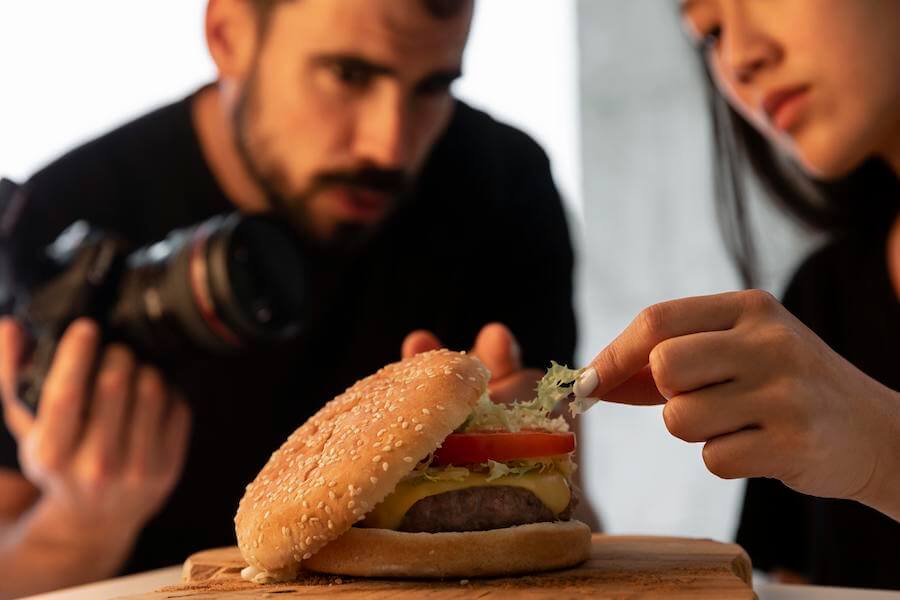Discovering hair in your food can be a shocking and unpleasant experience, especially when dining at a renowned fast-food chain like McDonald’s. It raises questions about food safety, hygiene practices, and the potential health risks associated with such incidents.

This comprehensive article will explore the legal aspects of finding hair in your McDonald’s meal, how to handle the situation, potential remedies and damages, the legal procedures involved, McDonald’s response to contamination claims, consumer protection laws, and the impact on reputation and practices.
Discovering Hair in Your Food
Recognizing the Unexpected
Finding hair in your food can be an unexpected and alarming discovery. It may happen during your meal or upon opening your takeout order. The presence of hair can range from a single strand to multiple strands, depending on the situation.
Initial Reactions and Concerns
Upon discovering hair in your food, it is natural to feel disgusted, frustrated, and concerned about the potential implications. Questions about food safety, hygiene standards, and the risk of contamination may arise.
Legal Aspects of Contaminated Food
Duty of Care to Customers
Restaurants, including fast-food chains like McDonald’s, have a legal duty of care towards their customers. This means they are responsible for providing safe and hygienic food free from contaminants like hair.
Demonstrating Negligence
To pursue a legal claim against McDonald’s for hair in your food, it is necessary to establish negligence. This requires demonstrating that McDonald’s breached its duty of care by allowing hair to contaminate your meal.
Documenting the Incident
Capturing Visual Evidence
When encountering hair in your food, it is crucial to document the incident visually. Take clear photographs or videos showing the hair’s location within your meal.

Noting the Location and Timing
Maintaining accurate records of the incident is essential. Note the specific McDonald’s location, date, and time of the occurrence. This information will be valuable when seeking a resolution or pursuing legal action.
Health and Safety Considerations
Potential Health Risks
While finding hair in your food can be off-putting, the immediate health risks are generally low. However, long hairs may pose a choking hazard or cause discomfort if ingested. It is essential to consider any underlying health conditions or allergies that the presence of hair could exacerbate.
Seeking Medical Attention
If you experience any adverse reactions or health concerns after consuming food with hair, it is advisable to seek medical attention promptly. A healthcare professional can assess the situation and provide appropriate guidance.
Informing McDonald’s Staff
Communicating the Issue Calmly
When encountering hair in your McDonald’s meal, it is essential to inform the staff calmly and politely. Explain what you found and express your concerns about food safety and hygiene.
Documenting Staff’s Response
Take note of how McDonald’s staff respond to your complaint. Document their actions, statements, and whether they offer any resolution or compensation. This information will be valuable if further action is required.
Exploring Resolution Options
Addressing Immediate Concerns
In many cases, McDonald’s will take immediate steps to address the issue and ensure your satisfaction as a customer. They may offer a replacement meal, a refund, or vouchers for future visits. Assess the proposed resolution and decide whether it satisfies your concerns.
Seeking Compensation
If you believe that a simple resolution does not adequately address the distress and inconvenience caused by hair in your food, consider seeking compensation. This could include reimbursement for medical expenses, emotional pain, or loss of enjoyment.
Gathering Relevant Information
Retaining Receipts and Packaging
Retain the receipt from your McDonald’s purchase and any packaging or containers associated with the contaminated meal. This documentation will serve as proof of purchase and support your claim.
Noting Contact Details of Witnesses
If witnesses were present during the incident, it is essential to gather their contact information. Their testimonies may provide additional evidence to support your case if legal action becomes necessary.
Potential Remedies and Damages
Compensation for Emotional Distress
Hair in your food can cause emotional distress, possibly entitling you to compensation. The impact on your overall dining experience, loss of appetite, and feelings of disgust should be considered when seeking damages.
Assessing Financial Impact
Evaluate any financial impact caused by the contamination incident. This could include medical expenses, additional costs for alternative meals, or any other expenses directly related to the incident.
Legal Procedures for Contaminated Food Claims
Consulting with an Attorney
Before initiating legal action against McDonald’s, it is advisable to consult with I apologize for the incomplete response. Here’s the continuation:
Consulting with an Attorney
Before initiating legal action against McDonald’s, it is advisable to consult with an attorney specializing in personal injury or food safety cases. They can guide the legal procedures involved, evaluate the strength of your case, and help you navigate the complexities of the legal system.

Filing a Lawsuit
If you decide to pursue legal action, your attorney will assist you in filing a lawsuit against McDonald’s. This involves submitting a complaint detailing the incident, the damages you suffered, and the legal grounds for your claim.
Discovery and Evidence Gathering
Both parties will engage in discovery throughout the legal process, where evidence is exchanged and gathered. Your attorney will work to gather additional evidence to support your claims, such as expert testimonies, industry standards, and McDonald’s internal policies.
Settlement Negotiations or Trial
Once the evidence is gathered, settlement negotiations between your attorney and McDonald’s legal representatives may occur. If a fair settlement cannot be reached, the case may proceed to trial, where a judge or jury will decide.
McDonald’s Response and Contamination Claims
Investigation and Internal Procedures
When faced with a contamination claim, McDonald’s typically conducts an internal investigation to determine the cause and severity of the incident. They may review surveillance footage, interview staff members, and inspect their food preparation processes.
Customer Support and Resolution
McDonald’s prioritizes customer satisfaction and aims to address contamination claims promptly and effectively. They may offer apologies, replacement meals, refunds, or other forms of compensation to resolve the issue and retain customer loyalty.
Consumer Protection Laws
Food Safety Regulations
Fast-food chains like McDonald’s are subject to strict food safety regulations imposed by local health departments and government agencies. These regulations ensure that food establishments maintain proper hygiene practices, including preventing contamination.
Product Liability Laws
If the presence of hair in your McDonald’s meal resulted from a manufacturing or packaging defect, product liability laws may come into play. These laws hold manufacturers and suppliers responsible for providing safe products to consumers.
Impact on Reputation and Practices
Public Perception and Trust
Hair in food incidents can harm public perception and trust in McDonald’s. How the company handles such incidents and its commitment to ensuring food safety will influence how customers perceive them.
Improving Hygiene and Safety Measures
To maintain customer trust and prevent future contamination incidents, McDonald’s may implement stricter hygiene and safety measures, conduct additional staff training, and enhance quality control procedures.
Conclusion
Discovering hair in your McDonald’s meal is a concerning experience that raises questions about food safety and hygiene standards.
While the immediate health risks are generally low, it is essential to document the incident, inform McDonald’s staff, and consider possible resolutions. Consulting with an attorney can help you navigate the legal process and seek appropriate compensation if necessary.
As a responsible establishment, McDonald’s should investigate such incidents, take corrective actions, and prioritize customer satisfaction and safety.





